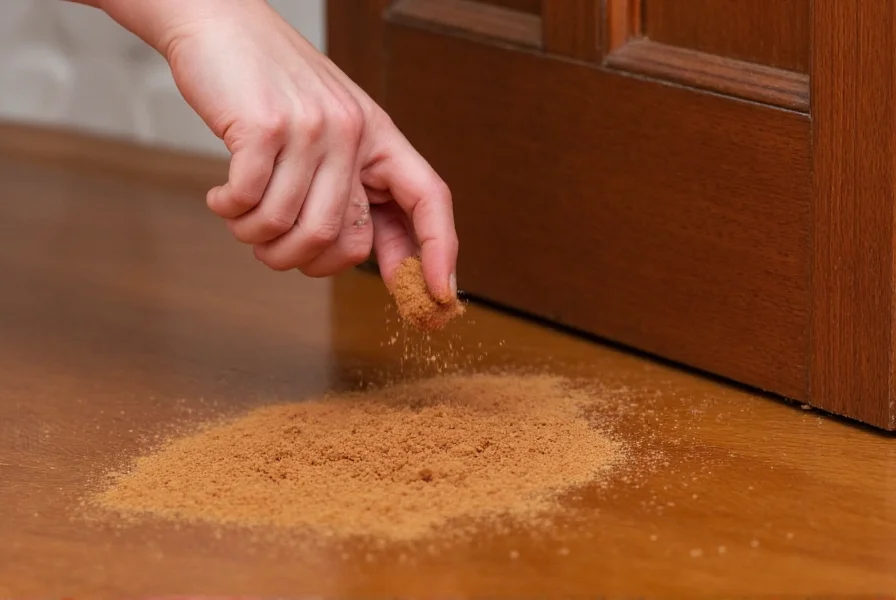When people search for information about blowing cinnamon through doorway practices, they're typically seeking to understand either the cultural significance behind this ritual or its practical applications. This article provides factual information about the tradition, its origins, potential uses, and important safety considerations that many online sources overlook.
Cultural Context of Cinnamon Threshold Rituals
The practice of blowing cinnamon through doorways originates primarily from Hoodoo, an African American spiritual tradition with roots in West African folk magic. In these traditions, cinnamon represents warmth, attraction, and prosperity. Practitioners believe that scattering ground cinnamon across thresholds creates an energetic barrier that:
- Attracts financial abundance into the home
- Creates protective boundaries against negative energy
- Symbolizes "sweetening" one's path to success
Similar practices appear in other cultural contexts, including some Latin American folk traditions where cinnamon (canela) features in cleansing rituals. These traditions typically involve specific timing, such as performing the ritual on Fridays (associated with abundance) or during the waxing moon phase.

Practical Applications Beyond Spiritual Practice
While primarily a spiritual practice, blowing cinnamon through doorways has gained attention for potential practical applications:
| Application | Effectiveness | Scientific Basis |
|---|---|---|
| Natural pest control | Moderate for ants and insects | Cinnamon oil disrupts insect pheromone trails |
| Air freshening | Temporary effect | Volatile compounds provide pleasant aroma |
| Mold prevention | Limited evidence | Cinnamaldehyde has antifungal properties |
Research published in the Journal of Agricultural and Food Chemistry confirms that cinnamaldehyde, the primary compound in cinnamon, demonstrates insect-repelling properties. However, the effectiveness of simply blowing ground cinnamon through doorways for pest control remains limited compared to concentrated cinnamon oil applications.
Safety Considerations for Cinnamon Threshold Practices
Many online sources promoting "blowing cinnamon through doorway" techniques fail to mention critical safety concerns:
Respiratory Risks
Inhaling fine cinnamon particles can cause significant respiratory irritation. The American Lung Association warns that cinnamon powder contains coumarin and fine particles that can trigger:
- Acute bronchitis symptoms
- Chemical pneumonitis (lung inflammation)
- Exacerbation of asthma conditions
Fire Hazards
Ground cinnamon is highly flammable when dispersed in the air. The U.S. Chemical Safety Board has documented multiple incidents where cinnamon dispersion created combustible dust clouds that ignited near open flames or electrical sources.
Evidence-Based Recommendations
If considering cinnamon threshold practices, experts recommend safer alternatives that maintain cultural integrity while minimizing risks:
- Use cinnamon sticks placed strategically rather than blowing powder
- Apply cinnamon oil diluted in water as a spray instead of dry powder
- Ensure proper ventilation when using any cinnamon-based preparations
- Consult with cultural practitioners for authentic, safe implementation methods
- Avoid the practice entirely if household members have respiratory conditions
Anthropologists studying folk traditions emphasize that many authentic practices incorporate safety considerations often omitted in viral social media trends. As Dr. Elena Rodriguez, a cultural anthropologist at Columbia University notes: "Traditional knowledge systems typically include built-in safety protocols that get lost when practices are extracted from their cultural context."
Conclusion: Balancing Tradition and Safety
Blowing cinnamon through doorways represents a cultural practice with roots in specific spiritual traditions, not a scientifically validated technique. While the ritual holds meaning within certain cultural contexts, modern adaptations should prioritize safety considerations that traditional practitioners historically incorporated. Understanding both the cultural significance and potential risks allows for more informed decisions about whether and how to incorporate such practices.
Is blowing cinnamon through doorways effective for attracting money?
No scientific evidence supports cinnamon threshold rituals for financial gain. While culturally significant in some traditions as a symbolic practice, it functions as a psychological ritual rather than a practical money-attracting method. Financial experts recommend evidence-based approaches like budgeting and investment planning for actual wealth building.
Can cinnamon really keep bugs away from doorways?
Cinnamon oil has documented insect-repelling properties, but blowing ground cinnamon through doorways provides limited pest control. Research shows cinnamon oil disrupts ant pheromone trails, but the concentration achieved through casual powder application is typically insufficient for meaningful pest prevention compared to targeted essential oil applications.
What are safer alternatives to blowing cinnamon powder through doorways?
Safer alternatives include placing whole cinnamon sticks near thresholds, creating a diluted cinnamon water spray, or using cinnamon-scented candles away from flammable materials. For cultural practitioners, consulting with tradition keepers about authentic safety protocols is recommended before attempting any ritual practice.
Why is inhaling cinnamon powder dangerous?
Inhaling cinnamon powder can cause severe respiratory issues because the fine particles contain coumarin and can coat lung tissue, leading to inflammation known as "cinnamon lung." Medical professionals report cases of chemical pneumonitis, acute bronchitis, and permanent lung damage from inhaling powdered spices, particularly in poorly ventilated spaces.











 浙公网安备
33010002000092号
浙公网安备
33010002000092号 浙B2-20120091-4
浙B2-20120091-4